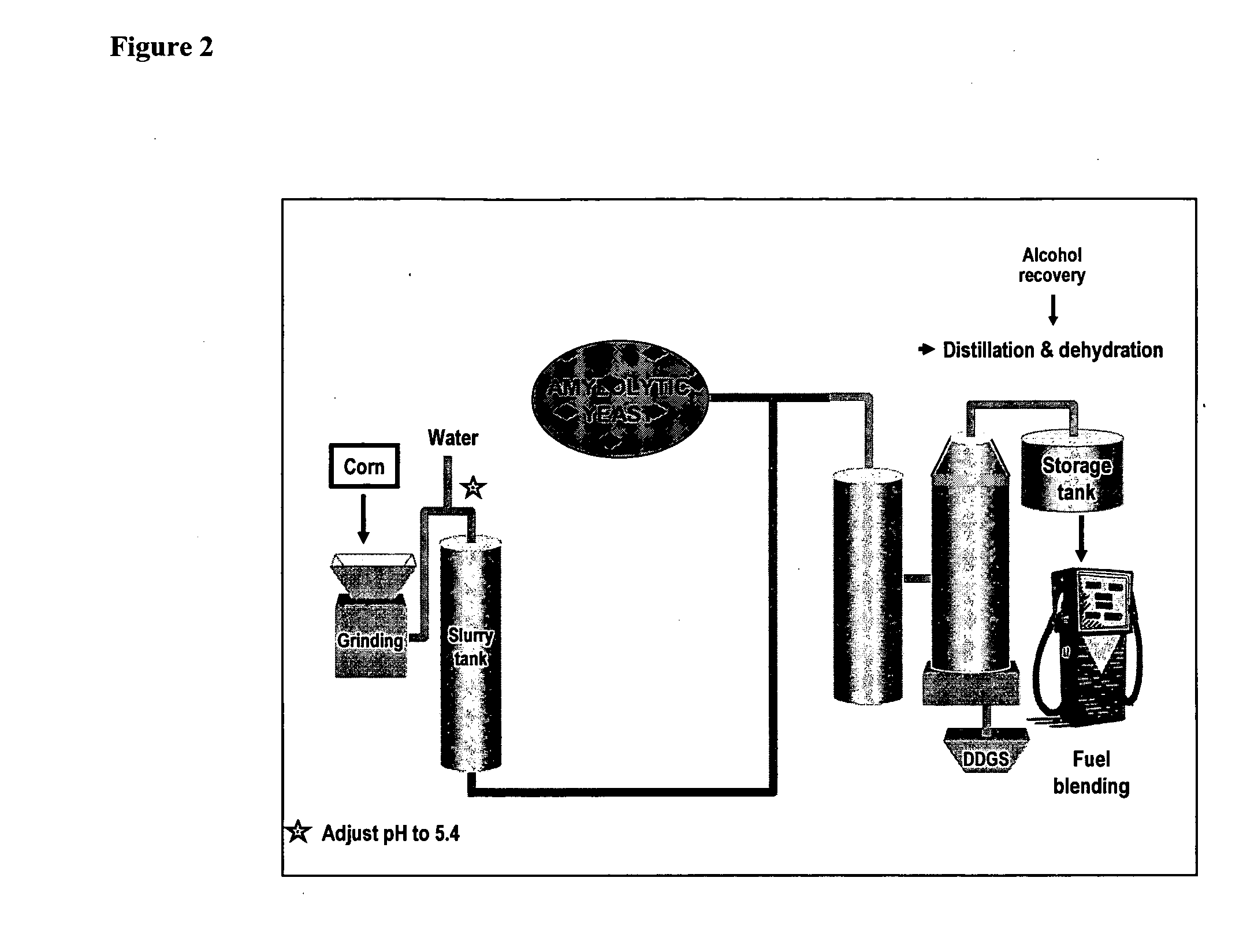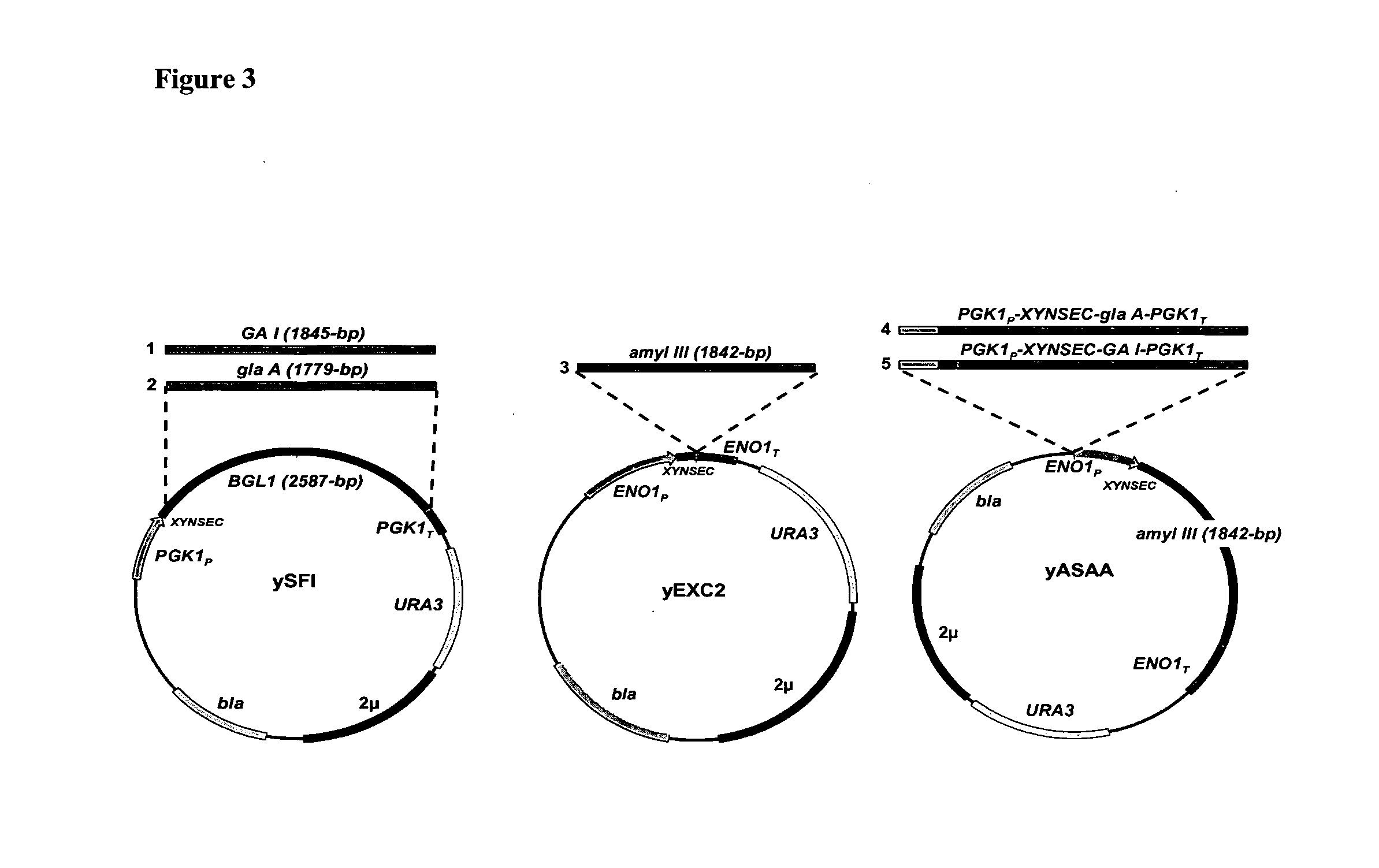Biofuel Production
- Summary
- Abstract
- Description
- Claims
- Application Information
AI Technical Summary
Benefits of technology
Problems solved by technology
Method used
Image
Examples
example 1
Materials and Methods
Strains and Media
[0266]All chemicals, media components and supplements were of analytical grade standard. The genotypes and sources of the plasmids, yeast and bacterial strains used in the experiments are summarised in Table 1. Recombinant plasmids were constructed and amplified in Escherichia coli XL1-Blue. The bacterial strains were cultivated at 37° C. on a rotating wheel in Terrific Broth or on Luria-Bertani agar (Sambrook et al., 1989). Ampicillin for selection of resistant bacteria was added to a final concentration of 100 μg ml−1. Fungal strains were cultivated at 30° C. on a rotary shaker set at 100 rpm. Aspergillus strains were cultivated in maltodextrin medium (5% maltodextrin, 0.6% NaNO3, 0.15% KH2PO4, 0.05% MgSO4, 0.05% KCl, and trace elements). The fungal strains were maintained at 30° C. on minimal medium (1% glucose, 0.6% NaNO3, 0.2% neopeptone, 0.15% KH2PO4, 0.1% yeast extract, 0.1% casamino acids, 0.05% MgSO4, 0.05% KCl, 2% agar and trace elemen...
example 2
Engineering New Amylolytic Yeast Strains for Industrial Ethanol Production
Strains and Media
[0311]All chemicals, media components and supplements were of analytical grade standard. Recombinant plasmids were constructed and amplified in Escherichia coli DH5α. The bacterial strains were cultivated at 37° C. on a rotating wheel in Luria-Bertani Broth (Sambrook et al., 1989). Ampicillin for selection of resistant bacteria was added to a final concentration of 100 μg ml−1. Strains of S. cerevisiae were cultivated in either YPD medium (1% yeast extract, 2% peptone and 2% glucose) or selective complete medium (SC) (2% glucose and 0.17% yeast nitrogen base without amino acids) with addition growth factors and amino acids as necessary, at 30° C. on a rotary shaker set at 100 rpm.
DNA Manipulations
[0312]Restriction enzyme digestion, electrophoresis, DNA ligation, transformation and DNA preparation from E. coli were performed using the standard methods according to Sambrook et al. (1989). DNA fr...
example 3
Selection and Development of an Efficient Amylolytic Yeast Strain for Industrial Ethanol Production
[0325]Screening for the Production of Extracellular Hydrolytic Enzymes by Saccharomyces cerevisiae and non-Saccharomyces Strains.
[0326]The media used in this work are reported in Table (a) below. All chemicals, media components and supplements were of analytical grade standard.
TABLE (a)Summary of media used in this study.MediumReference or supplierEdimburgh Minimal Medium (EMM)Favaro et al., 2008Minimal Medium Yeast (MMY)Favaro et al., 2008Nutrient Agar (NA)DIFCOWollum mediumWollum et al., 1982
Screening for the Production of Extracellular Hydrolytic Enzymes by Saccharomyces cerevisiae and Non-Saccharomyces Strains.
Yeast Strains
[0327]Two hundred and twenty S. cerevisiae strains and 180 non-Saccharomyces isolates were screened for their amylolytic activities. S. cerevisiae DSM 70449 was used as reference negative strain while S. diastaticus ATCC 13007, having glucoamylolytic activity, wa...
PUM
| Property | Measurement | Unit |
|---|---|---|
| Fraction | aaaaa | aaaaa |
| Fraction | aaaaa | aaaaa |
| Fraction | aaaaa | aaaaa |
Abstract
Description
Claims
Application Information
 Login to View More
Login to View More - R&D
- Intellectual Property
- Life Sciences
- Materials
- Tech Scout
- Unparalleled Data Quality
- Higher Quality Content
- 60% Fewer Hallucinations
Browse by: Latest US Patents, China's latest patents, Technical Efficacy Thesaurus, Application Domain, Technology Topic, Popular Technical Reports.
© 2025 PatSnap. All rights reserved.Legal|Privacy policy|Modern Slavery Act Transparency Statement|Sitemap|About US| Contact US: help@patsnap.com



